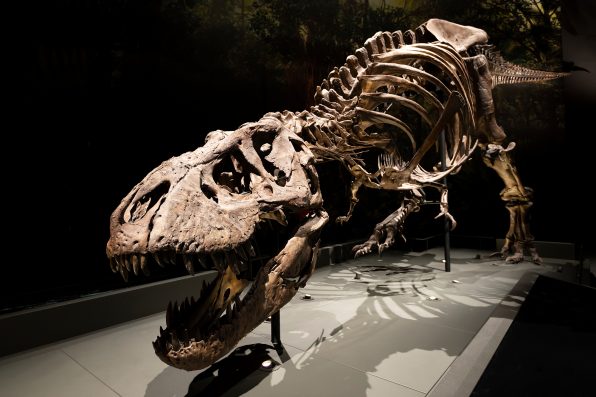Scientists Think They Have Discovered The Origin Of The Rare Asteroid That Likely Wiped Out The Dinosaurs 66 Million Years Ago

Throughout its history, Earth has undergone five mass extinction events. The most recent was the one that killed all the dinosaurs.
The mass extinction event that wiped out all non-avian dinosaurs 66 million years ago was caused by a giant asteroid that slammed into the Earth.
Not only did this spell the end of an era for dinosaurs, but about 80 percent of animals on the planet were obliterated as well.
After performing an analysis of metal isotopes that were scattered from the impact, scientists think they have now figured out the origin of the asteroid.
It’s not from the main asteroid belt, as previously believed, but from the outer solar system beyond Jupiter.
They also investigated five other asteroid collisions and discovered that they were created by space rocks from the inner solar system.
The asteroid responsible for eradicating the dinosaurs is known as the Chicxulub impactor. It was thought to be between six and 12 miles wide, but the high speed at which it was traveling caused it to form a crater more than 90 miles across.
According to NASA, it was moving at 15.5 miles per second. It struck the Earth at what is now the Yucatán Peninsula in Mexico.
“This impact totally changed the picture of our planet and caused the emergence of mammalian life,” said Mario Fischer-Gödde, the lead author of the new study and a geochemist at the University of Cologne in Germany.

Edwin Butter – stock.adobe.com – illustrative purposes only
The collision would have sent soot and vapor into the atmosphere, leading to the deaths of countless species.
In addition, metals were released, and they settled on the ground all over the planet. Now, they are preserved in a layer of rock that marks the boundary between the Cretaceous and Paleogene periods in the geologic record. It is known as the K/Pg boundary.
One of the metals is ruthenium, which is rare on Earth but relatively common in meteorites. The concentration of ruthenium isotopes in an asteroid depends on where it originated.
The researchers examined ruthenium levels at the K/Pg boundary and five other impact locations that cropped up over the last 541 million years.
The boundary had ruthenium isotope signatures that were similar to carbon-rich meteorites that form in the outer solar system, indicating that the infamous asteroid came from there as well.
The other impact sites better fit the description of asteroids from the inner solar system—they have more silicate minerals.
The new study disproves a previous theory that a comet was the culprit. It supports past evidence that an asteroid was behind the mass extinction event.
The origin of such objects is important to know if scientists want to properly assess and prevent similar incidents in the future.
The findings were published in the journal Science.
Sign up for Chip Chick’s newsletter and get stories like this delivered to your inbox.
More About:News